Peter Buell Porter ( 1773-1844) was one of the major figures in establishing Western New York. He and other investors bought land around Black Rock and built trading companies. Peter B. Porter also built his second home there in 1816 on what would come to be called Niagara Street after his first home had been destroyed by the British during the War of 1812. It was a riverfront estate of rural beauty.
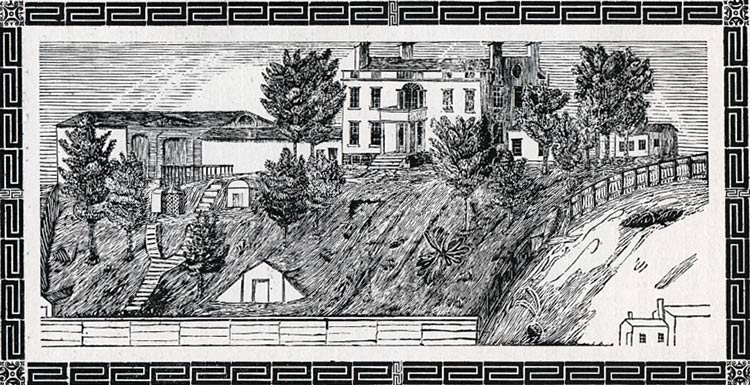
Woodcut of the river side of the Porter property c. 1835. Image source: Picture Book of Earlier Buffalo
Historian Frank Severance wrote, "When built, the house was surrounded by five acres of ground reaching from the west side of Niagara street to the natural shore of the river. The elevation of most of the ground is 25 feet above the water. About 150 feet from the river front of the house and rear of the outer buildings a rather steep slope descended to a lower level five or six feet above the stream. On the slope were also built an ornamental summer house and four other small buildings, two on each side, ice-house, smoke-house, etc. Near the margins of the river was excavated a capacious artificial fish-pond, stored within muscalonge, spotted pickerel, yellow pike and other choice fish for family consumption, then abounding in the water opposite, and drawn out by seines of the fishermen of the neighborhood. Throughout the grounds were planted many fruit trees. On the street front of the out-buildings was laid out an ample garden. In front of the house was a lawn about 250 wide reaching to the highway entrance, the name of the 'street' not then having entered the vocabulary of the place. The lawn, then called a 'dooryard,' was entered by a wide carriage and foot way, which led to the front door of the house, encircling by two branches, about midway of its approach, an area of grass-plat bordered by rows of shrubbery and flowering plants; beyond were planted native trees taken from the original forests near by. A high picketed fence with a broad gate bordered the highway, its frequent posts topped with large bomshells, relics of the War of 1812-1815. A large cannon, once in hostile service, was planted perpendicularly at the division of the entrance passage from the gate around the circle. All these war-like appendages gave a somewhat military character to the place. One by one, as the years passed, they disappeared."
Peter B. Porter and his wife, Laetita Breckenridge Grayson Porter, entertained prominent national figures here until 1837, when they moved to a home in Niagara Falls. The estate had already begun to shrink however, when, in 1823-25, construction of the Black Rock Pier enclosed a portion of the river front. The fish-pond disappeared when the Erie Canal was built.
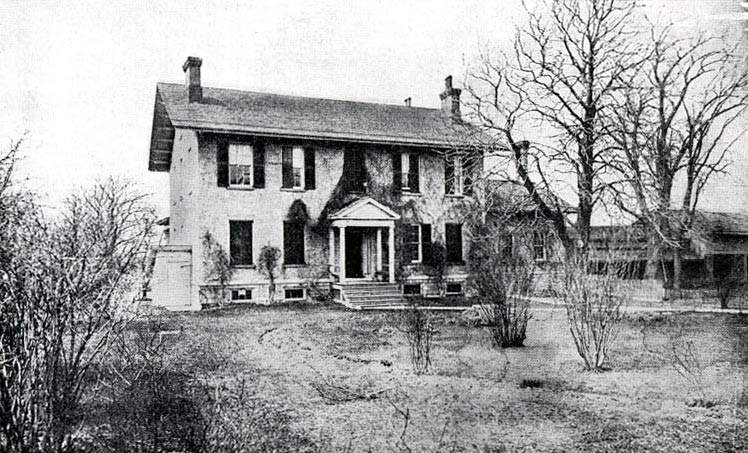
Side facing Niagara Street c. 1880s during the time Lewis Fahey Allen owned the property and made significant alterations.
Image source: Picture Book of Earlier Buffalo
The grand riverfront estate continued to feel the encroachment of progress in the 1830's when owner Lewis Fahey Allen saw the Buffalo, Lockport and Niagara Falls Railroad lay tracks 120 feet from the river front of the mansion, destroying the summer house and orchard.
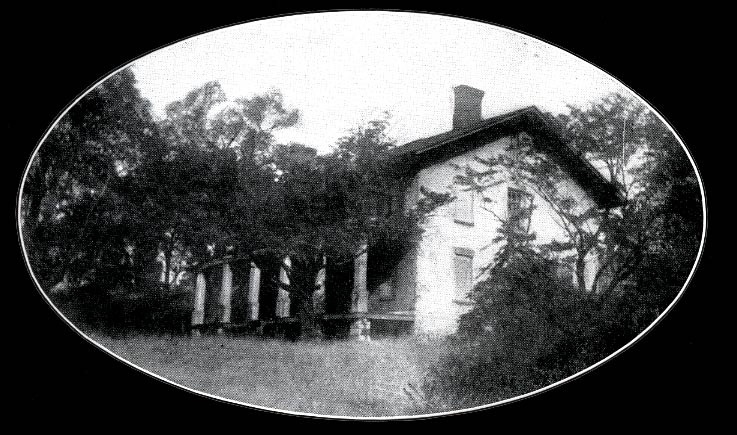
River side view of the house c. 1900 . The address at that time was 1191 Niagara Street.
Image source: Picture Book of Earlier Buffalo
Late in the 19th century, Allen sold part of the grounds for building lots. And, after his death in 1900, his heirs sold the property to E. R. Thomas, who built his automobile factory around the home and used that building for a few years as part of the factory.
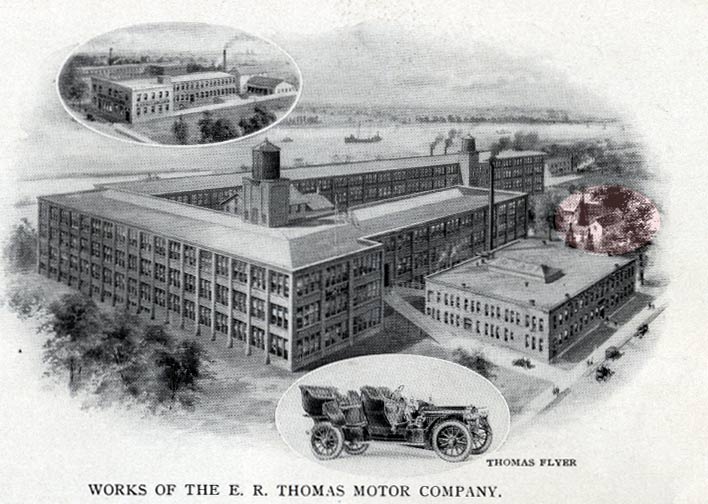
Last days of the Porter-Allen residence, shaded area at right, surrounded by the Thomas Motor Company factory c. 1905. Image source: private collection.
In 1911, the Porter-Allen home, no longer an anchor for a riverfront estate but a remnant from pastoral times, was demolished.
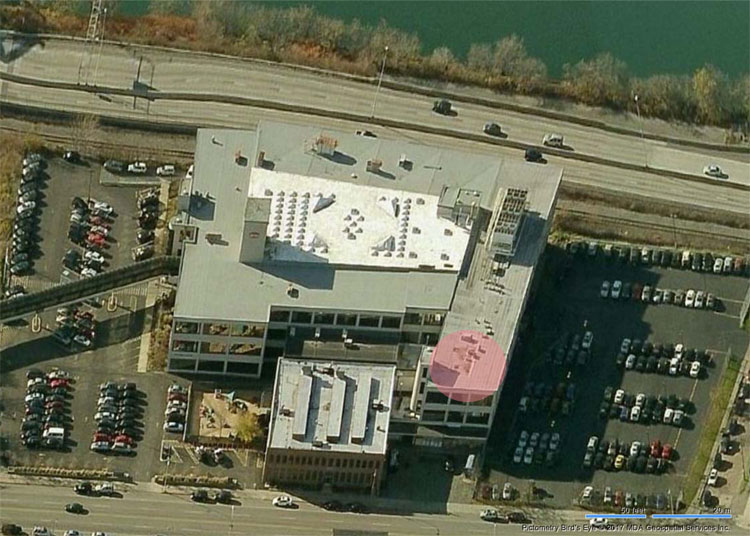
Modern Bing map of a portion of the Rich Products campus on Niagara St. In the center is the former Thomas Automobile factory. The shaded circle is the former location of the Porter mansion.
While still standing, the Porter-Allen home was recognized locally as almost the most historic home in Buffalo. During the Porters' residency, visitors had included Lafayette, John Quincy Adams, De Witt Clinton, Red Jacket, and other contemporaries of Peter B. Porter from his service as Congressman, Secretary of War, and military commander. During Lewis Fahey Allen's ownership, Henry Clay, Daniel Webster, General Winfield Scott, governors and military officers filled its rooms. In addition to hosting Millard Fillmore, Allen's nephew Grover Cleveland lived for a time at the house.
For more information on Peter B. Porter, look here.